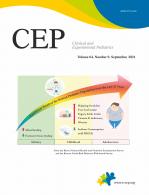The Korean National Health and Nutrition Examination Survey (KNHANES) and Korea Youth Risk Behavior Web-based Survey (KYRBS) are major nationwide health and nutrition surveys in Korea.
The review article entitled ŌĆ£Dietary intake and nutritional status of Korean children and adolescents: a review of national survey dataŌĆØ summarizes the findings of KNHANES and KYRBS data-based papers that focus on infant feeding practices, and the dietary intake and nutritional status of Korean infants, children, and adolescents within the last 5 years.
The author organized the study findings well with the major issues of interest: dietary behavior, nutritional status, and nutrition-related chronic diseases. This study greatly aids our understanding of the results of previous studies.
By following the study results presented by the author, readers might outline the nutritional status of the Korean population as follows:
(1) Mixed feeding of formula and breast milk is the most common feeding practice in Korea for children aged 1ŌĆō3 years, and the exclusive breastfeeding rate decreased over time [1,2].
(2) One quarter of Koreans introduce complementary foods to their infants at 4ŌĆō5 months of age, while 64.3% do so at 6ŌĆō7 months of age.
(3) Unhealthy eating habits, such as skipping breakfast, eating fast/processed foods, and ingesting sugar-sweetened beverages, have increased continuously.
(4) Although sodium intake has decreased, it remains higher than the World Health Organization recommendation.
(5) A considerable prevalence of vitamin D insufficiency was identified. Some studies suggest associations between vitamin D deficiency and some chronic diseases.
(6) An increase in obesity and allergic diseases was observed.
Most of the studies referred in current review focused on changes in the prevalence or tendencies toward certain nutritional behaviors, conditions, and nutrition-related chronic diseases.
However, several studies focused on the association or risk of chronic diseases that could be caused by or related to nutritional issues, and the authors summarized them well in Tables 3ŌĆō7.
In the current review, the authors focused only on nutrition studies, while a far greater number of studies based on KNHANES and KYRBS data were conducted, which can be checked easily in an online database (Fig. 1) [3].
As mentioned in the review, the KNHANES has been conducting 3-year surveys since 1998 with reference to National Health and Nutrition Examination Survey (NHANES) in the United States, and it has been implemented annually since the fourth phase in 2007.
The survey collects information on socioeconomic status, health-related behaviors, quality of life, healthcare utilization, anthropometric measures, biochemical and clinical profiles for noncommunicable diseases, and dietary intakes using a health interview, health examination, and nutrition survey [4].
The latest updated available data are of 2018, corresponding to the 3rd year of the 7th phase, and the first year of the 8th phase is scheduled to be opened soon [5].
Conversely, the KYRBS is an annual school-based national cross-sectional survey that monitors health risk behaviors associated with noncommunicable diseases and unintentional injuries among Korean adolescents conducted by the Korean Ministry of Education, Ministry of Health and Welfare, and the Korea Centers for Disease Control and Prevention since 2005, and latest available data are of 2019 [6,7].
In fact, the beautiful part of KNHANES-based research is that the KNHANES is a longitudinal national representative dataset that provides general (but detailed) health-related information and biochemical and clinical profiles simultaneously.
There are few nationwide surveys worldwide that provide biochemical and clinical/nutritional profiles simultaneously like the KNHANES, and considering the breadth and depth of the collected data and its accumulation over the period, the KNHANES is almost unique globally (Table 1) [8].
Although longitudinal data are available, it is necessary to consider that the KNHANES itself is a cross-sectional sample survey; hence, a temporal comparison must be performed cautiously. Furthermore, not all subjects of the KNHANES completed the biochemical studies, the enrollment criteria of which changed over time.
For a pediatrician, KNHANES has some disappointing aspects; detailed food frequency, food, and dietary intake surveys were obtained only in subjects aged >19 years, while the biochemical screenings were performed only in patients aged Ōēź10 years [5].
Thus, KYRBS may be a more attractive alternative to pediatricians since it focused on adolescents. In fact, KYRBS is a quite useful questionnaire survey, and it would be difficult to improve upon it to evaluate adolescent health, diet, and risk behavior.
However, it still has the limitations of a cross-sectional sample survey. Because KYRBS is an anonymous self-reported survey, it is also necessary to consider the sincerity of the subjectsŌĆÖ responses.
The KNHANES has been accumulating data for more than 20 years versus 15 years for the KYRBS. Thus, the accumulated data are valuable. However, once these data are combined with other social/demographic/public health data (e.g., national consumption of dairy food, national health insurance claim data of specific diseases), new prospects for understanding public health can be provided. Furthermore, the current coronavirus disease 2019 pandemic has dramatically changed peopleŌĆÖs health and dietary behaviors, and upcoming survey results would obviously reflect them. I believe that these research issues quite interesting and promising.






 PDF Links
PDF Links PubReader
PubReader ePub Link
ePub Link PubMed
PubMed Download Citation
Download Citation


